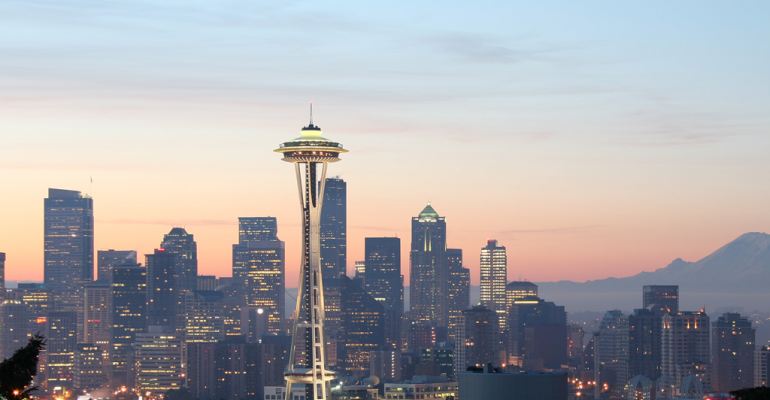Multifamily developers have been very busy in Seattle, especially in the core sub-markets around downtown. But thanks to affordability and strong job growth—including in the city’s core—few new apartments are sitting vacant and rents continue to rise.
“Performance remains terrific, despite all the new product that has been added to the stock,” says Greg Willett, chief economist with RealPage, which provides property management software and solutions for commercial and multifamily properties. “Lots of places register very solid expansion of downtown jobs, but Seattle’s urban core growth rate is in a whole different category.”
Vacancies shrink in Seattle
Despite all the new construction, the percentage of vacant apartments has fallen on average. Currently, vacancy is at 4.6 percent, down from 4.9 percent at the end of 2016, according to New York City-based research firm Reis Inc.
“Seattle has seen a lot of construction, but demand has stayed even with construction, so Seattle has not seen any vacancy rate increase,” says Barbara Byrne Denham, senior economist with Reis.
Seattle’s economy is strong—but not strong enough to account for how well the apartment sector is doing there. The number of jobs in the Seattle area has grown steadily, increasing by 2.5 percent since last year. That puts Seattle at number 20 out of the 82 metro areas tracked by Reis. Seattle is doing better than the U.S. overall, where the number of jobs is now just 1.6 percent higher than it was the year before.
Seattle is also attracting new residents because it’s not quite as painfully expensive to live there as in other large cities in Western United States. “What is different about Seattle is that its rent levels ($1,654 per unit) are considerably lower than San Francisco ($2,990 per unit) and San Jose ($2,530), so it’s more affordable for millennials,” says Denham.
Seattle’s urban core leads the market
Seattle’s urban core sub-markets fit within the general theme of the metro area. Developers have opened a large number of new apartments, but employers in the area have also hired a large number of new employees.
Since 2010, developers have opened 21,707 new apartments in Seattle’s three urban core markets: Downtown, South Lake Union/Queen Anne and Capitol Hill. That’s a third (33 percent) of the new apartments that opened in the metro area overall. Another 9,378 new apartments are under construction. “That’s 46 percent of everything under construction across the metro,” says Willett.
New jobs are helping to fill all these new units, led by the expansion of tech giant Amazon. The apartments in the urban core markets are 96.7 percent occupied, and apartment rents are growing at a rate of 6.6 percent a year, according to research firm MPF.
In the South Lake Union/Queen Anne sub-market, where Amazon has its headquarters, rents are growing even more quickly, at a rate of 11.8 percent a year.
With so many more new apartments on the way, occupancy is likely to fall below 96 percent over the next few years, according to MPF. Rent growth should slow as well, with the expected annual increase coming in at around 4.5 percent.
“Even with that moderation, however, Seattle’s urban core forecast is among the strongest in any downtown across the country,” says Willett.

